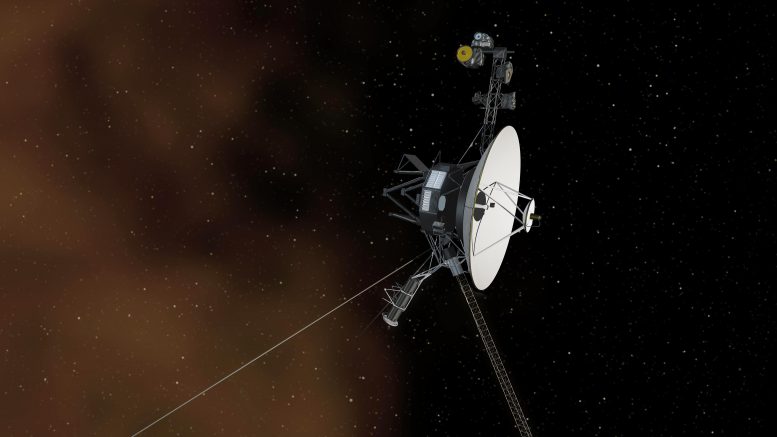
This artist’s concept depicts NASA’s Voyager 1 spacecraft entering interstellar space, or the space between stars. Following a computer glitch, Voyager 1 is back to transmitting scientific data, with further instrument recalibrations expected soon. Credit: NASA/JPL-Caltech
Voyager 1, after overcoming a computer issue, has resumed sending scientific data from two of its instruments, with plans to recalibrate the remaining two soon. This marks significant progress in restoring the spacecraft, which is over 15 billion miles from Earth and requires over 22 hours for communications to travel one way.
NASA’s Voyager 1 has resumed returning science data from two of its four instruments for the first time since November 2023, when a computer issue arose with the spacecraft. The mission’s science instrument teams are now determining steps to recalibrate the remaining two instruments, which will likely occur in the coming weeks. The achievement marks significant progress toward restoring the spacecraft to normal operations.
Progress in Troubleshooting
In April, after five months of troubleshooting since the original computer issue, the mission was able to get the spacecraft to begin returning usable engineering data about the health and status of its onboard systems, including the science instruments. On May 17, the team sent commands to the 46-year-old spacecraft that enabled it to resume sending science data to Earth. With Voyager 1 located more than 15 billion miles (24 billion kilometers) from its home planet, it takes light over 22 1/2 hours to reach the spacecraft, and 22 1/2 hours for a signal to return to Earth. As a result, the team had to wait nearly two days to see if their commands were successful.
Instruments Begin Data Return
The plasma wave subsystem and magnetometer instrument are now returning usable science data. As part of the effort to restore Voyager 1 to normal operations, the mission is continuing work on the cosmic ray subsystem and low energy charged particle instrument. (Six additional instruments aboard Voyager 1 are either no longer working or were turned off after the probe’s flyby of Saturn.)
Diagnosing Communication Issues
Normal operations were interrupted last year when Voyager 1 began sending a signal back to Earth that contained no science or engineering data. The team eventually determined the issue stemmed from a small portion of corrupted memory in the flight data subsystem, one of the spacecraft’s three computers. Among other things, this system is designed to package data from the science instruments as well as engineering data about the health and status of the spacecraft before that information is sent to Earth.
Longstanding Exploration Achievements
Launched in 1977, Voyager 1 and its twin, Voyager 2, will celebrate 47 years of operations later this year. They are NASA’s longest-operating spacecraft as well as the first and only spacecraft to explore outside the heliosphere. Created by the Sun, this bubble of magnetic fields and solar wind pushes against the interstellar medium, an ocean of particles created by stars that have exploded elsewhere in the Milky Way galaxy. Both probes flew past Jupiter and Saturn, while Voyager 2 also flew past Uranus and Neptune.
>>> Read full article>>>
Copyright for syndicated content belongs to the linked Source : SciTechDaily – https://scitechdaily.com/fresh-data-from-the-cosmos-nasas-voyager-1-resumes-sending-science-data-from-15-billion-miles-away/